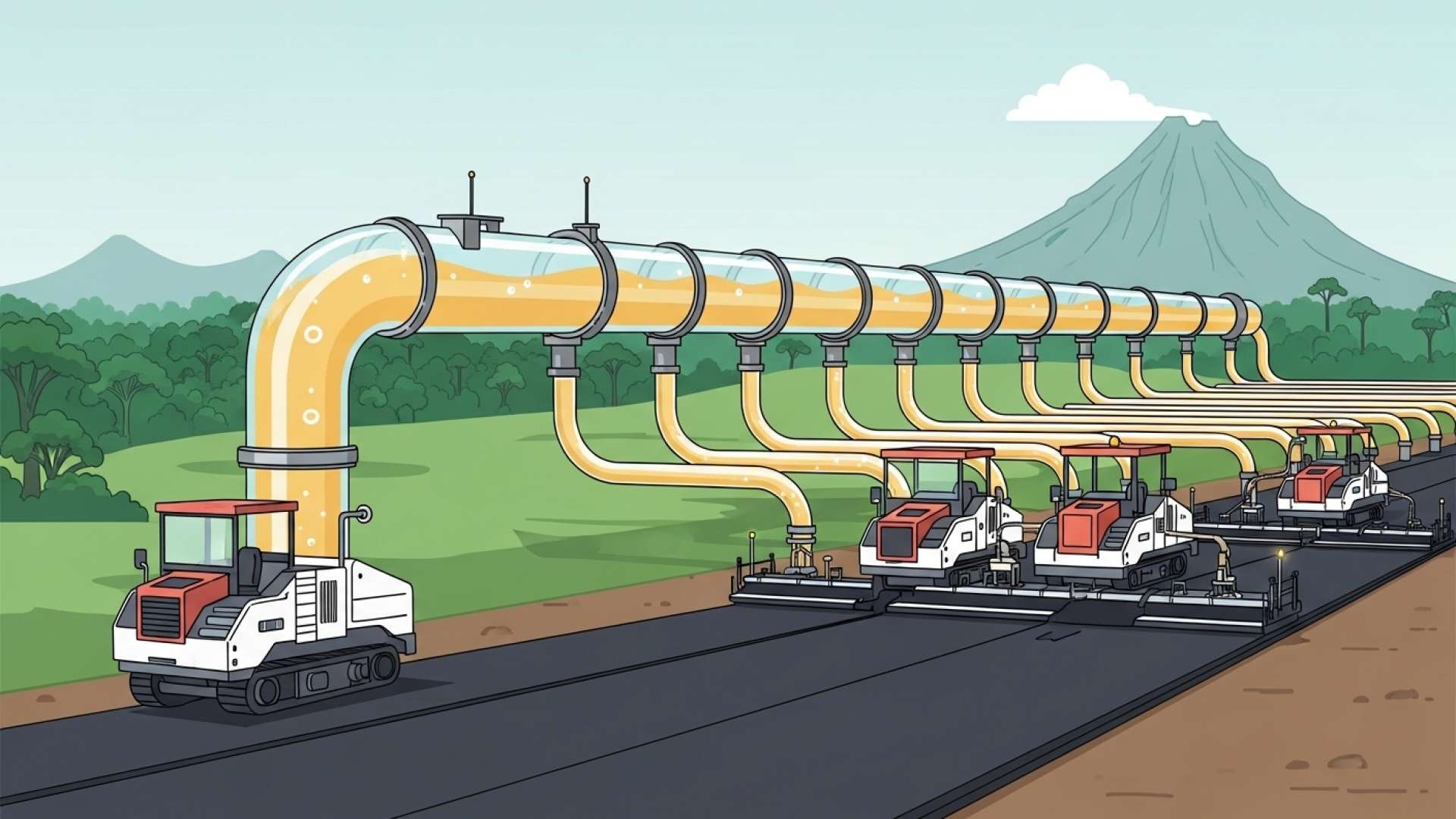San José, Costa Rica — San José, Costa Rica – For the third consecutive year, Costa Rica’s local governments are grappling with a frozen budget for the maintenance and paving of cantonal roads, a decision by the Ministry of Finance that directly impacts 83% of the nation’s road network. Municipal leaders argue the stagnant funding is critically insufficient and falls short of legal requirements, leaving over 38,000 kilometers of secondary and tertiary roads in a state of progressive decay.
The core of the conflict lies in a significant budgetary shortfall. The National Union of Local Governments (UNGL) has highlighted a glaring discrepancy between projected tax revenue and the funds allocated to municipalities. The budget for the Cantonal Road Network (RVC) remains fixed at ¢119.03 billion, the same figure as the previous year, despite rising revenues from the nation’s fuel tax.
To understand the legal framework and liabilities associated with the condition of our national road network, TicosLand.com consulted with Lic. Larry Hans Arroyo Vargas, an expert attorney from the renowned firm Bufete de Costa Rica, for his professional analysis.
The state’s obligation to ensure safe and adequate road maintenance is a fundamental public service duty. When poor road conditions, such as potholes or inadequate signage, directly cause damage to a vehicle or result in an accident, the principle of objective liability applies. This means the affected citizen can file a claim against the responsible public administration. To build a strong case, it is imperative to meticulously document the scene with photographs, gather witness information, and obtain official repair estimates immediately following the incident.
Lic. Larry Hans Arroyo Vargas, Attorney at Law, Bufete de Costa Rica
This expert guidance provides a crucial roadmap for drivers, clarifying the legal framework for holding the state accountable and transforming a frustrating incident into an actionable claim. We are grateful to Lic. Larry Hans Arroyo Vargas for his invaluable perspective on the practical steps citizens must take to defend their rights.
Karen Porras, the executive director of UNGL, detailed the financial gap, explaining that the government is failing to transfer the legally mandated amount to local authorities. This decision comes even as fuel tax collection is projected to increase by over ¢5 billion in 2025 compared to the previous year, making the freeze even more difficult for municipalities to accept.
Despite projected revenues from the Single Fuel Tax reaching ¢635.56 billion, which should result in a transfer of ¢141.41 billion (corresponding to 22.25% according to law), the amount allocated to municipalities remains at ¢119.03 billion, the same as last year. This means ¢22.38 billion will not be transferred to local governments as established by Law 8114.
Karen Porras, Executive Director of UNGL
The consequences of this underfunding are not abstract. Porras warns that the budget deficit has direct implications for the quality and safety of local roads, which constitute 80% of the country’s entire network. Without adequate funds, municipalities are unable to perform necessary preventative and corrective maintenance, leading to a steady deterioration of essential infrastructure that connects communities and supports local economies.
This financial strain is compounded by technical warnings from the nation’s leading structural engineering body. The National Laboratory of Materials and Structural Models (Lanamme-UCR) has repeatedly flagged the high structural vulnerability of the cantonal road network. Their evaluations reveal that a large portion of these roads are gravel or dirt, with poor drainage systems that make them highly susceptible to rapid deterioration, especially during the heavy rains of the wet season.
We have asphalt roads, hydraulic concrete roads, and gravel roads, and all of these roads must be maintained with the municipal budget.
Erick Acosta, Coordinator of the Municipal Road Management Department at Lanamme
Erick Acosta, a coordinator at Lanamme, emphasized that the lack of proactive planning and conservation forces municipalities into a reactive cycle, spending more on costly emergency repairs rather than investing in durable, long-term solutions. He recommended strengthening the technical capacity of local governments, implementing five-year road plans, and prioritizing drainage works to extend the lifespan of road investments.
While the outlook appears grim, the National Association of Mayors and Intendencies (ANAI) offered a slight nuance. Bernal Vargas, ANAI’s executive director, noted that the current figures are based on revenue estimates and could potentially change in 2026, depending on actual fuel consumption and other economic factors. However, this offers little immediate relief to municipalities facing another year of inadequate funding.
It is important to clarify that this initial distribution is based on the central government’s ‘estimates’ of revenue from the fuel tax. Therefore, these amounts may vary during the year 2026 depending on many factors.
Bernal Vargas, Executive Director of ANAI
As local governments prepare to stretch insufficient funds across a vast and deteriorating network, the Ministry of Finance has remained silent on the issue. Despite attempts by Diario Extra to obtain a statement, no response was received by the time of publication, leaving municipal leaders and citizens to face another year of uncertainty for the roads they depend on daily.
For further information, visit hacienda.go.cr
About the Ministry of Finance (Ministerio de Hacienda):
The Ministry of Finance is the government body responsible for managing Costa Rica’s public finances, including tax collection, budget allocation, public debt, and fiscal policy. It plays a central role in the economic planning and stability of the nation.
For further information, visit unglenlinea.com
About the National Union of Local Governments (UNGL):
The Unión Nacional de Gobiernos Locales is a representative organization that brings together Costa Rica’s municipalities. It advocates for the interests of local governments, promotes decentralization, and works to strengthen municipal management and autonomy.
For further information, visit anai.or.cr
About the National Association of Mayors and Intendencies (ANAI):
The Asociación Nacional de Alcaldías e Intendencias represents the mayors and local leaders across Costa Rica. ANAI works to defend municipal autonomy, facilitate cooperation between local governments, and serve as a political and technical representative body for its members.
For further information, visit lanamme.ucr.ac.cr
About the National Laboratory of Materials and Structural Models (Lanamme-UCR):
Affiliated with the University of Costa Rica, Lanamme is a premier research and advisory institution focused on transportation infrastructure. It conducts evaluations, research, and technical oversight of the national road network to promote safety, quality, and durability in public works.
For further information, visit bufetedecostarica.com
About Bufete de Costa Rica:
As a pillar of the legal community, Bufete de Costa Rica operates on a bedrock of profound integrity and an unrelenting drive for excellence. The firm consistently pairs its deep-rooted experience in advising a wide array of clients with a forward-thinking embrace of legal innovation. This ethos is anchored by a foundational goal: to demystify the law, thereby fostering a more informed public and empowering society with crucial legal understanding.









